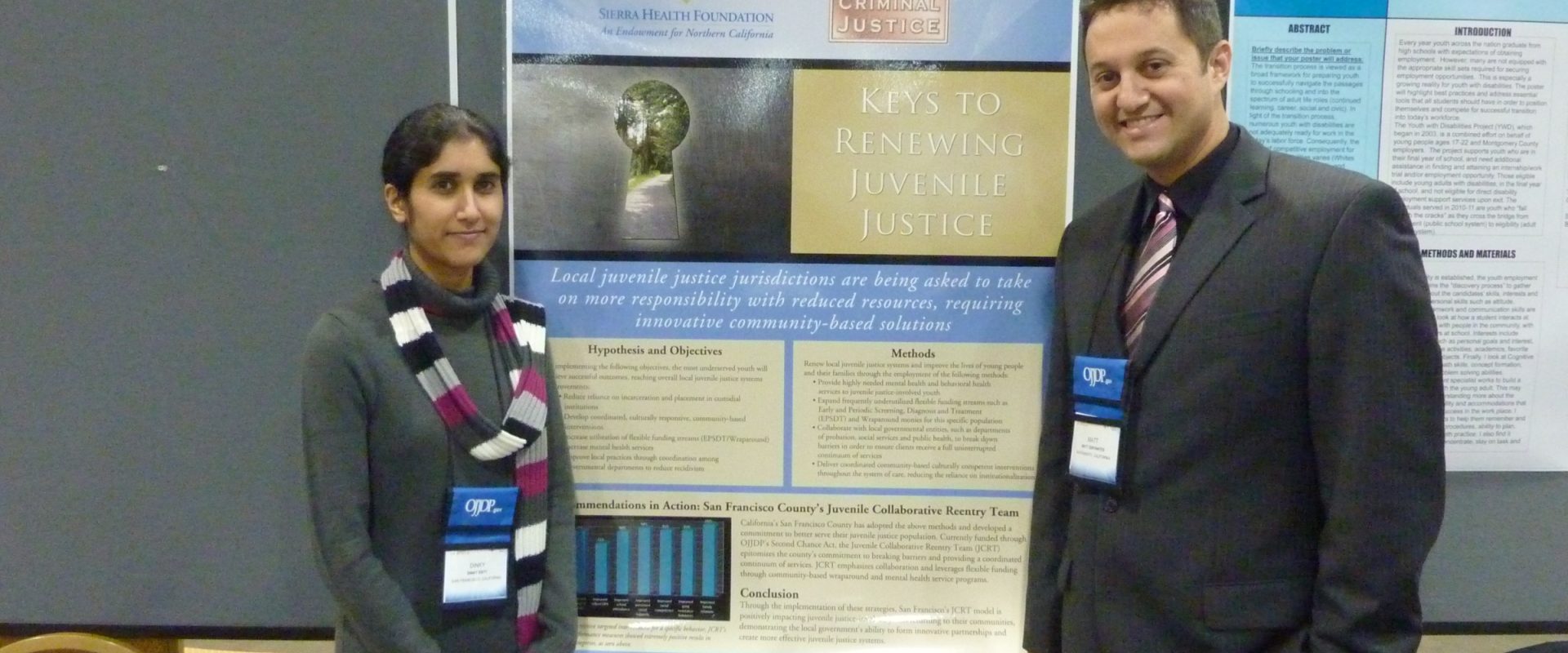We provide comprehensive case planning reenrty, and aftercare services for high needs youth returning from out-of-home placement to reduce recidivism and placement failure from long-term commitments.
Comprehensive case planning and aftercare services for high needs youth returning from out-of-home placement
Eligibility & referrals
The Juvenile Collaborative Reentry Unit (JCRU) serves all youth who have been committed to out-of-home placement as part of a juvenile justice court disposition in San Francisco County.
How it Works
Upon disposition, a JCRU representative meets with the youth to introduce them to the program and begin the process of preparation for release. The youth and their family members are involved in every decision regarding the services, education, and vocational opportunities to be included in their comprehensive reentry plan.Upon release, the youth and their family meet with the full JCRU membership to coordinate implementation and delivery of services. JCRU consists of members from:
The team works with a dedicated judge to ensure that they assist youth in a thoughtful and reintegration process that addresses their needs. JCRU employs evidence-based practices and utilizes risk-needs assessment tools. The average length of enrollment in JCRU is 6 – 24 months.
By 2012, the JCRU program had resulted in a 29% improvement in recidivism rates for participating youth compared to the same population in prior years.
In 2011, California Chief Justice Tani Cantil-Sakauye visited JCRU to personally witness the process:
History
Established in 2009 as a Second Chance Act National Demonstration Project Site, JCRU aimed to address historically high recidivism and failure rates of youth exiting out-of-home placements in San Francisco, through an intentional partnership of key stakeholders including the youth and their family. For more information read the Program Narrative.
In 2008, the majority of San Francisco’s placement failures were low-income youth of color. This trend reflected the disproportionate concentration of crime and violence in San Francisco’s most disadvantaged and underserved communities. In 2011, youth living in San Francisco’s poorest neighborhoods accounted for 76% of youth referrals.
While long-term out-of-home commitments distance youth from destructive local influences, they also disconnect them from potentially beneficial community, family, and educational supports. Reentry and aftercare services for high-risk youth returning from placement are an essential component to successful exit from the justice system.
JCRU has received national recognition, including:
- Sept-Oct 2010, Judicial Council of California, Administrative Office of the Courts Newsletter.
- February 23, 2011, National Reentry Resource Center’s Second Chance Act Grantee Conference on the subject of Implementing Cross-System Collaboration.
- December 15, 2011, Judicial Council of California Administrative Office of the Courts Beyond the Bench Conference.
- December 13, 2012, The California Wellness Foundation’s annual conference on the subject of Ensuring Public Safety Through Successful Juvenile Re-Entry.
In October 2012, the San Francisco Probation Department recognized the success of JCRU and chose to formalize the program as a unit of the department.
Contact:
Booker Gray- Director of Juvenile Justice Services
Tel: (415) 621‑5661 ext. 106
Fax: (415) 621‑5466
bgray@cjcj.org
